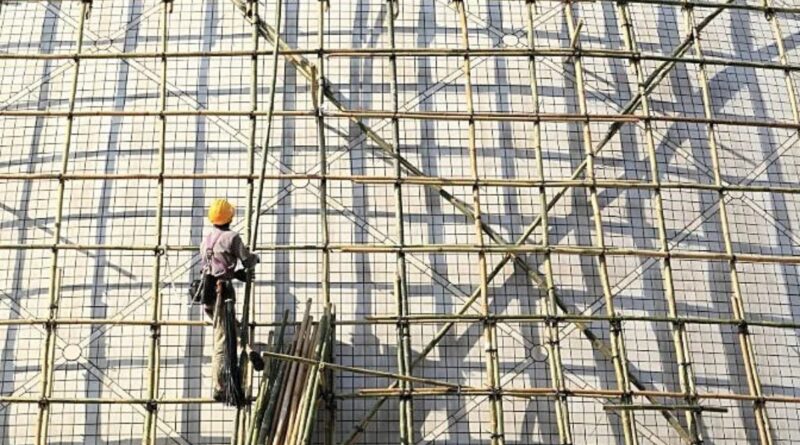The Art of Safe and Efficient Construction Scaffolding
Key Takeaways
- Scaffolding is essential for construction safety and accessibility.
- Choosing the right type of scaffolding ensures project efficiency.
- Proper scaffolding maintenance and inspection are crucial.
- Training and guidelines are fundamental for worker safety.
Why Scaffolding Is Crucial in Construction
In the bustling world of construction, scaffolding is a fundamental component that guarantees safety and accessibility. These temporary structures enable workers to undertake their tasks at various heights safely and efficiently, ensuring that every aspect of the construction process is approachable and manageable. Accessibility is paramount, especially in urban settings where skyscrapers touch the clouds. Tools like ladders complement scaffolding, reaching spots that might remain untouched otherwise, and exploring options such as ladder rental Bronx can provide localized, economical solutions to address specific project needs. Scaffolding serves not only as a platform but as the structural backbone that supports intricate tasks, enhancing overall safety on site. Its implementation allows projects to progress seamlessly while prioritizing worker protection and operational efficiency.
Types of Scaffolding and Their Uses
The diversity of scaffolding reflects its adaptability to different construction requirements. Each type plays a critical role in supporting various project stages and environmental challenges. Suspended scaffolding, which hangs from the roof, is ideal for tasks requiring meticulous attention to detail, such as high-rise window cleaning and painting. Supported scaffolding, including steel and wooden scaffolds, offers robust solutions for projects demanding higher load capacities. Moreover, rolling scaffolds, equipped with castor wheels, provide mobility within confined spaces, facilitating easy movement across expansive work sites. This diversity ensures tailored solutions for multifaceted construction demands, turning potential obstacles into navigable pathways toward project success.
How to Choose the Right Scaffolding
Selecting the right scaffolding is akin to laying the foundation of a building; it is a crucial decision that impacts the entire structure. When navigating this decision, consider critical factors like height, weight capacity, weather conditions, and the specific demands of your project. For instance, projects in windy locales may require more stable supported scaffolding, whereas quick and adaptable solutions might benefit from rolling scaffolds indoors. This selection process should balance cost-efficiency with safety, a decision underpinned by understanding both site-specific needs and broader industry standards. By making informed choices, project managers can ensure that scaffolding remains a pillar of both project success and workplace safety.
The Importance of Scaffolding Maintenance and Inspection
Regular maintenance and inspection of scaffolding elements are indispensable in fostering a safe construction environment. Without consistent checks, structural weaknesses may remain unnoticed, posing significant risks to workers. Maintenance routines should encompass comprehensive evaluations for wear and tear, rust, and material degradation. Inspections act as preventive measures, identifying potential weak points before they manifest into critical safety hazards. Compliance with safety regulations and protocols, such as those set by the Occupational Safety and Health Administration (OSHA), can further secure workplace safety, transforming scaffolding into a robust ally rather than a risk. This vigilant approach preserves both the integrity of the scaffolding and the safety of the workforce.
Training and Best Practices for Scaffolding Use
The efficacy of scaffolding amplifies significantly when coupled with thorough training and adherence to best practices. Comprehensive training sessions equip workers with the necessary skills for assembling, maneuvering, and disassembling scaffolding. Recognizing the importance of safety, such training incorporates guidelines for safely navigating elevated platforms and using personal protection equipment. Frequent refreshers ensure that safety is ingrained in workplace culture, minimizing the likelihood of human error. Additionally, safety drills and consistent evaluations keep the workforce adept at managing both routine tasks and emergency situations. Following established safety protocols ensures that the knowledge imparted translates to real-world applications, fostering an environment where safety is paramount.
Common Misconceptions About Scaffolding
Despite its ubiquity in the construction industry, scaffolding remains shrouded in several misconceptions. A prevalent myth is that scaffolding is cost-prohibitive, deterring smaller projects from considering its utility. However, evolving technologies and market competition have made scaffolding both affordable and scalable, accommodating projects of all sizes. Another fallacy is the notion that scaffolding is cumbersome and complex to assemble. On the contrary, modern designs emphasize intuitive assembly, with labeled components and modular systems simplifying the process. By debunking these myths, industry professionals can harness scaffolding’s full potential, leveraging it as a resource rather than a perceived hindrance.
Innovations in Scaffolding Technology
Technological advancements are continually reshaping the scaffolding landscape, introducing innovations that enhance both functionality and safety. Modern scaffolding designs incorporate materials like fiberglass and aluminum, which offer lightweight yet durable alternatives to traditional steel. These materials resist corrosion and are suited for diverse climatic conditions, expanding their utility across different environments. Additionally, smart scaffolding systems now integrate sensors to monitor structural integrity in real-time, alerting project managers to potential issues before they escalate. Such innovations epitomize the intersection of technology and construction, underscoring scaffolding’s evolving role in modern infrastructure development.
Conclusion: Building Safer Futures
Scaffolding is more than a physical structure; it is a testament to the commitment to safety and efficiency within the construction industry. Its adaptability to various projects, coupled with technological advancements, underscores its indispensable role in shaping modern infrastructure. Emphasizing the importance of choosing the right type, ensuring regular maintenance, and promoting comprehensive training, scaffolding remains a fundamental aspect of securing construction sites across the globe. By investing in these practices, industry professionals can mitigate risks, elevate productivity, and ultimately build safer, more resilient futures for everyone involved.




